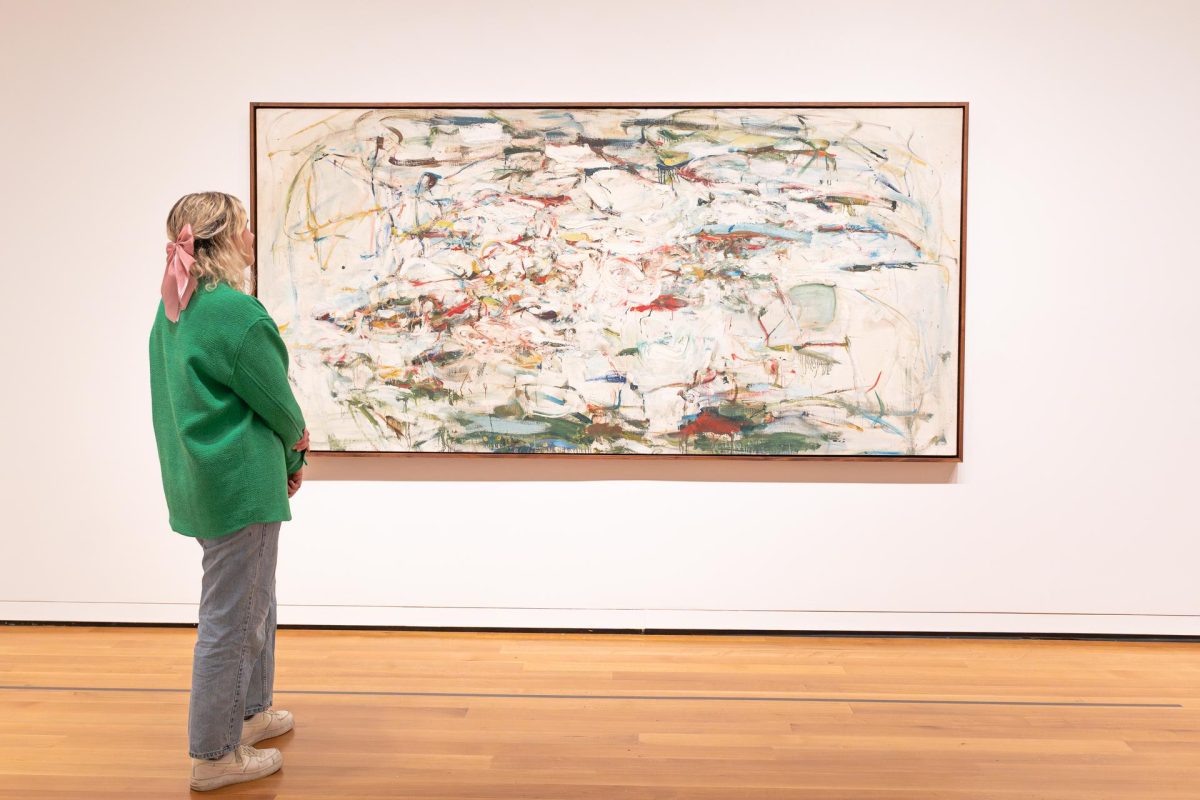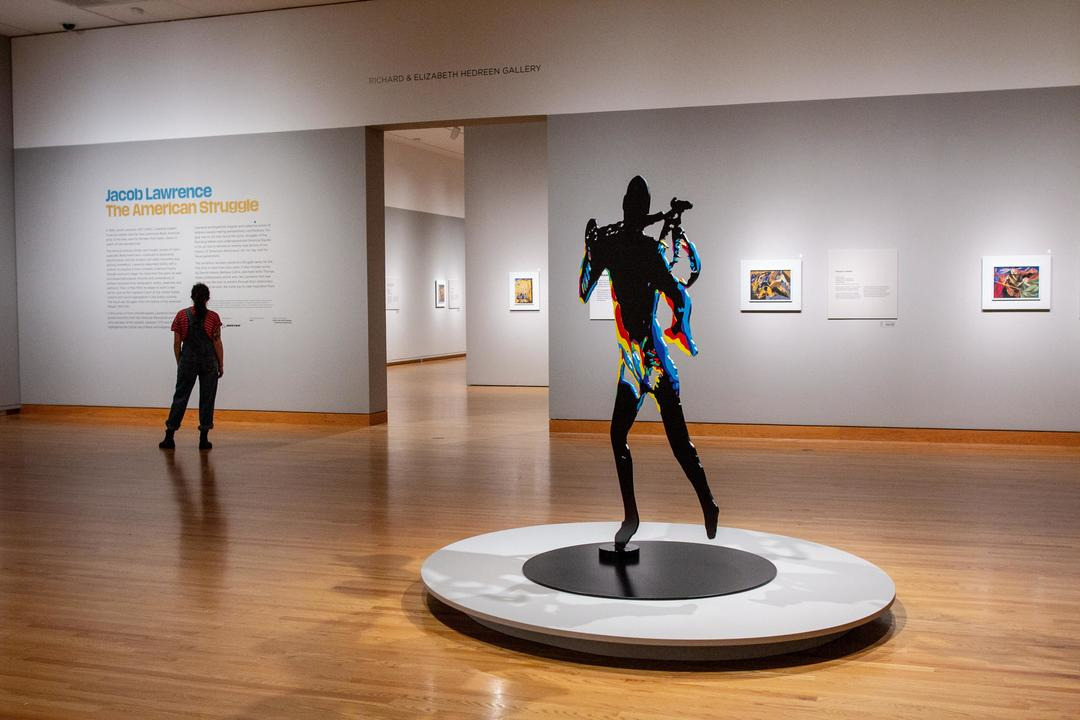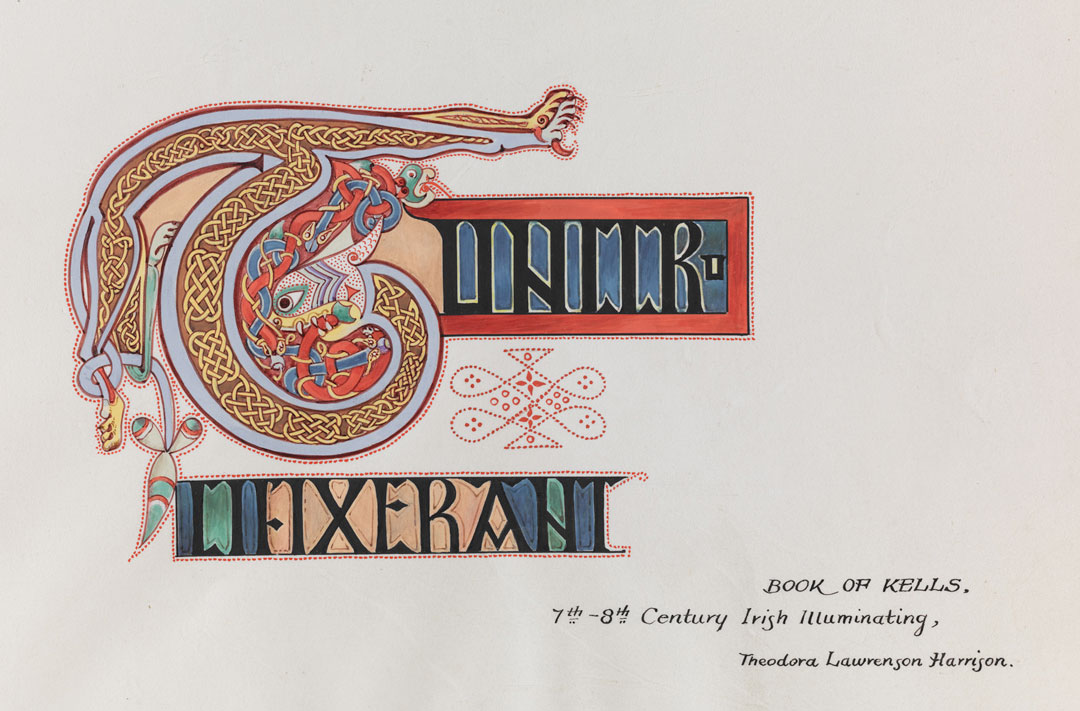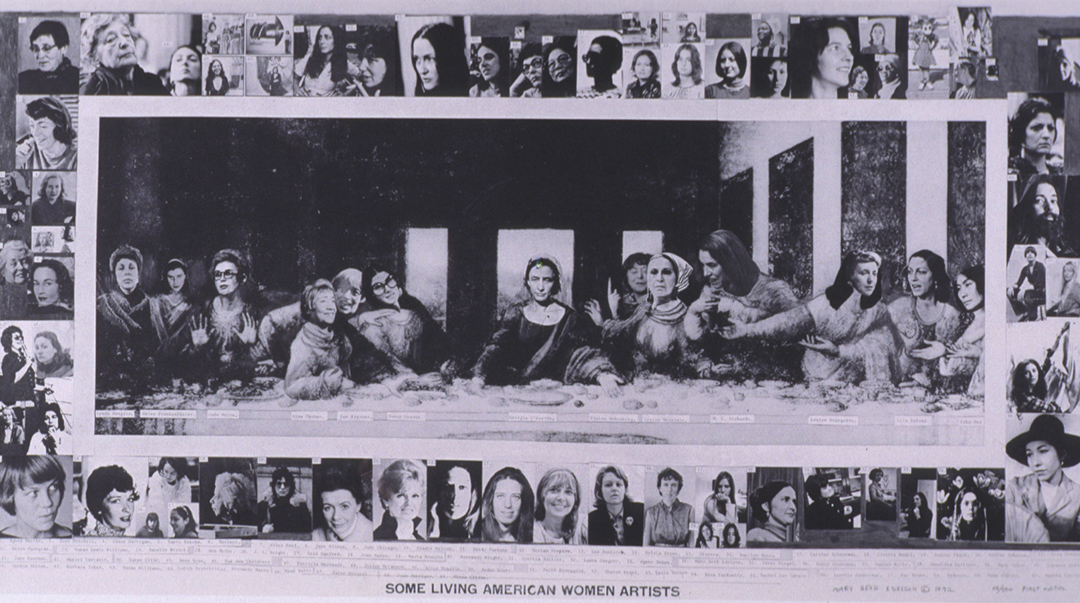Celebrate Women’s History Month With Five Artworks by Women Artists on View at SAM
Every March, the United States recognizes women’s past and present contributions to society with Women’s History Month. On International Women’s Day on Friday, March 8, we took to social media to highlight the five ongoing and upcoming solo SAM exhibitions by remarkable contemporary women artists. They include:
- Jaune Quick-to-See Smith: Memory Map (Through May 12)
- Anida Yoeu Ali: Hybrid Skin, Mythical Presence (Through July 7)
- Elizabeth Malaska: All Be Your Mirror (Through June 16)
- Joyce J. Scott: Walk a Mile in My Dreams (October 17 2024 – January 19 2025)
- Bethany Collins: Gwendolyn Knight and Jacob Lawrence Prize Winner (November 14 2024 – May 4 2025)
Now, our celebration of Women’s History Month continues with this round-up of five artworks by women artists you can currently see on view in SAM’s galleries. The five artworks discussed below represent only a few of the many works by women artists in SAM’s collection, but show the range of different techniques, subject matter, and ideas they bring to their art. Women have always been artists and craftspeople, but they have not always been celebrated or acknowledged for their contributions. Plan your next visit to the Seattle Art Museum to appreciate these artworks in person and learn more about the historical and contemporary artists who made them.

Yunarla, 2010
Yukultji Napangati
The precisely painted dots of Yunarla form patterns and undulations that take on a meditative, entrancing quality. Curving lines radiate out from the central knot, suggestive of a topographic map in some ways, but also referring to the vines of the bush banana. Also called the silky pear vine, the bush banana (marsdenia australis) only grows in Australia and serves as food with edible fruit, roots, leaves, seeds and flowers. The name Yunarla also signifies a particular rockhole and soakage site where ancestral women camped to replenish their energy near these places in the desert where water is stored beneath the surface of the sand.
Yukultji Napangati (born ca. 1970) lived with her family in the Gibson Desert until 1984, when she and several others from her Pintupi tribe made contact with non-Indigenous Australians for the first time. The “Pintupi Nine” became a media sensation as a “lost tribe,” while they insisted they were not lost, as they were living as their ancestors had for millennia. While adjusting to culture shock, Napangati became aware of the Papunya Tula’s community art center, which established a thriving business for Australian Aboriginal people to create and sell their art in 1972. Women began painting in the mid-1990s, and Napangati quickly adopted the ethos of educating outsiders by conveying extensive knowledge about her community and culture through this restrained mark making. Don’t miss your chance to see this work in Honoring 50 Years of Papunya Tula Painting, which closes after April 14.
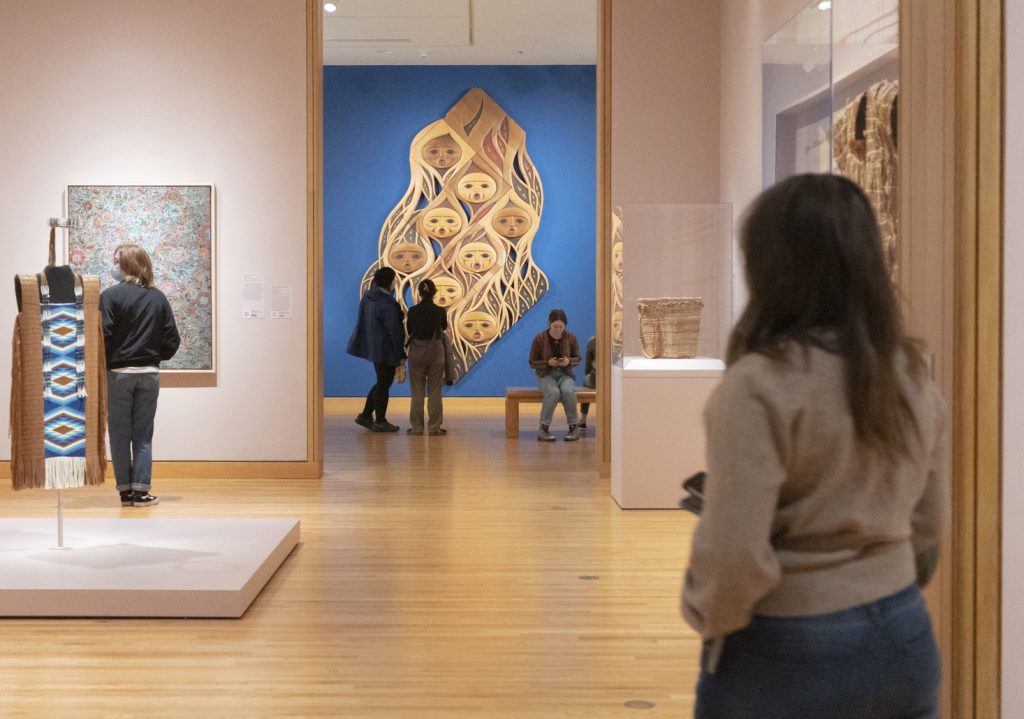
The First People, 2008
Susan Point
The First People was commissioned for the Seattle Art Museum and stands twelve feet tall, greeting visitors to the museum’s Native American art galleries. Prominent Northwest Coast artist Susan Point (born 1951) brings traditional Salish forms and techniques to contemporary and often public settings to share the history and culture of First Nation people. Point has been credited with single-handedly reviving a unique Salish style that laid dormant for nearly 100 years; she is among only a handful of Native female artists working in the media of woodcarving.
In this work, the eight faces connecting via flowing tendrils refer to the hereditary roots and extended families of the Salish people. These root-like forms also signify the fjords and meandering pathways that punctuate the traditional homelands of her own people, the Musqueam of the Fraser Delta in present-day Vancouver. These pathways are the lifelines that yield salmon and other foods for Salish people. Looking closely at the carving, we can see the perfectly smooth surface of the faces, in contrast to the visible chisel marks of the roots, both showcasing the natural beauty of the cedar wood itself, a material highly valued by First Peoples.
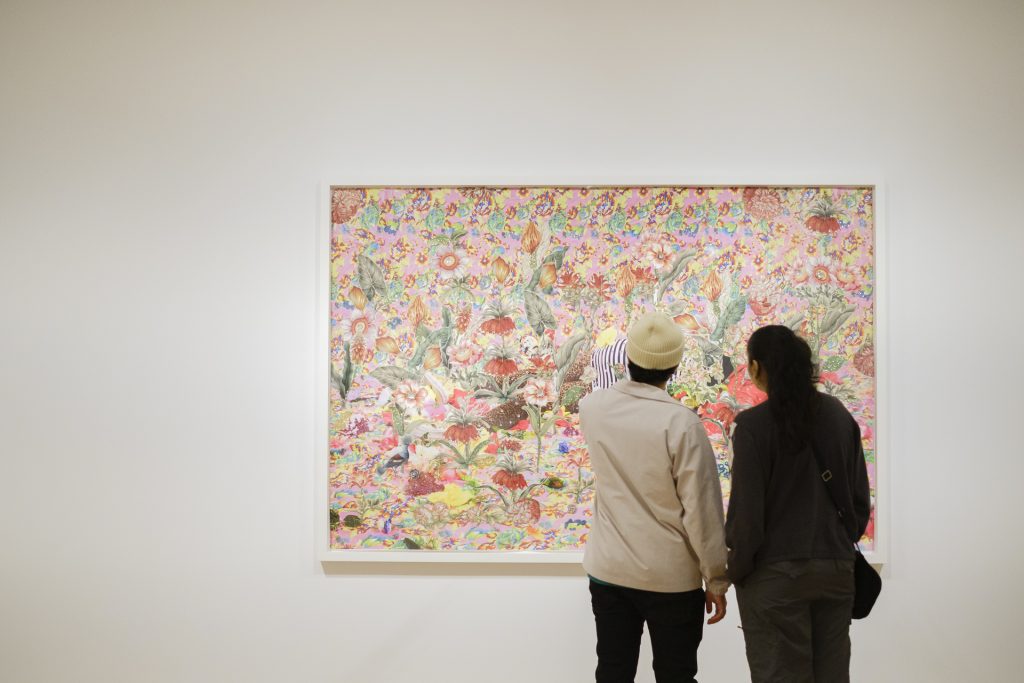
Dug Up from Kitchen Weeds, 2014
Ebony Patterson
In its barrage of color, pattern, and glittering textures, Dug Up from the Kitchen Weeds, on view in Remember the Rain, hides a more somber image. The black-and-white stripes at the center clothe a figure that is lying face down. Though this form is camouflaged within the pink floral background, rhinestones, and tropical birds and plants, it is also hypervisible. Once you notice the stripes, leopard print pants, and red shirt, you can’t overlook them.
Ebony Patterson (born 1981) cites bling funerals, an increasingly popular occurrence in Kingston, Jamaica, as a source of reference, as “the glitter and bling shines light on things.” These lavish celebrations held for working class people say, “You may not have noticed me when I was alive, but you will damn well see me before I leave.” Patterson is interested in bringing people on the margins into focus in her work—first by catching the eye with striking color and imagery, and then by asking viewers to look more closely and see what they find embedded within and protruding from the surface of her collages. Her aesthetic of ornamentation and ostentation often takes on qualities of both disguise and hypervisibility to engage with issues one might rather ignore, such as wealth disparity, high murder rates, and police-related deaths in Jamaica.
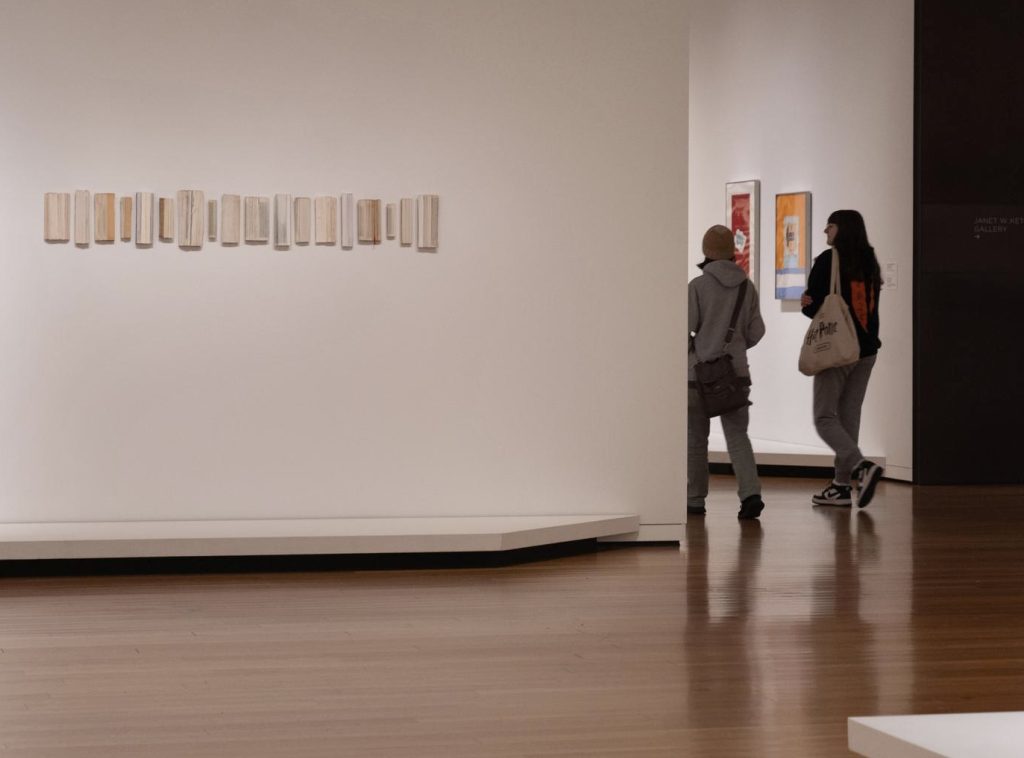
Codigo Desconhecido #5, 2015
Marilá Dardot
Marilá Dardot (born 1972) often works with text-based materials—including books, printed cards, and magazines—to explore ideas of language, communication, and memory. In Codigo Desconhecido #5 (which translates to “unknown code”), books are cut down to their spines, rendering them illegible. Instead of reading and accessing the books’ knowledge, the viewer is left to see these books as objects or artifacts. Each book is cut or ripped to reveal its unique paper and binding materials rather than its words, making its structure but not its content visible.
This work, on view in SAM’s modern and contemporary art galleries, is part of a series that Dardot began during an artist’s residency in Vienna, when she was surrounded by books in a language she could not read. Words are powerful, but here she removes them and in doing so, opens up many avenues for interpretation. Dardot’s work plays with books as our main source and conduit of knowledge—questioning which stories get told or repressed, how translation and language can limit our understanding of others, and possibilities for political resistance on the page and outside of it.
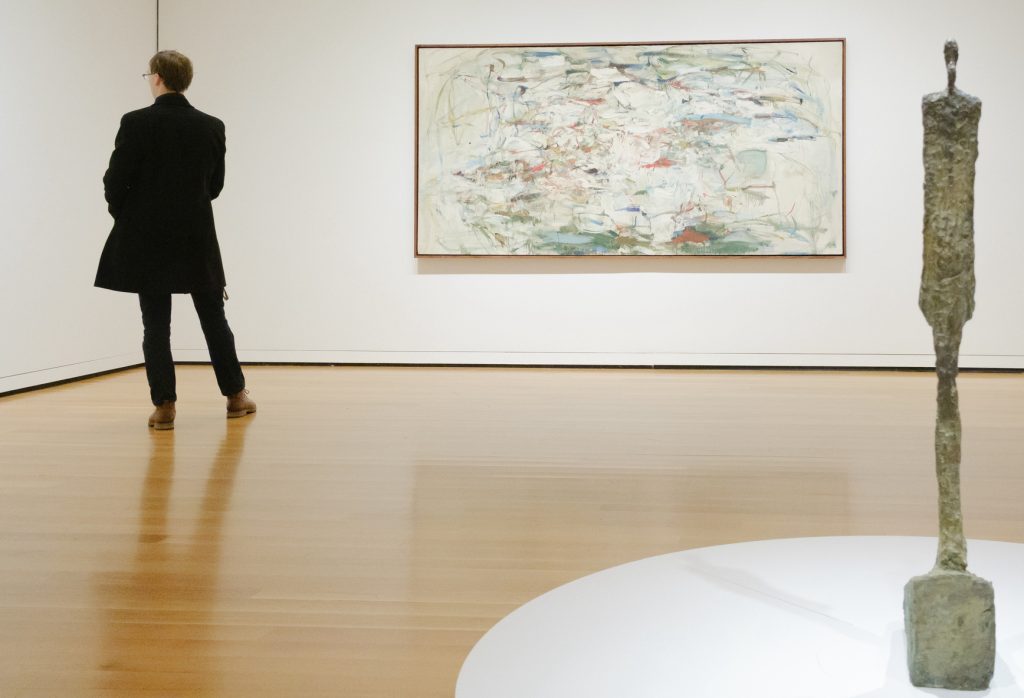
The Sink, 1956
Joan Mitchell
The Sink (1956) is nearly ten feet in length; its size engulfs the viewer in a range of colors, textures, and feelings. Joan Mitchell (1925–1992) was an artist who used her memories, experiences, and environment as inspiration for her abstract works, seeking, in her own words, “to define a feeling.” The Sink, also on view in SAM’s modern and contemporary art galleries, is an abstracted landscape of sorts, with its pools of green and blue interrupted by swirls, drips, and jagged lines in yellow and red and interspersed with thick applications of white paint. Rather than capturing a strictly realistic image of nature, this painting seems more like a memory or impression of a place built up with emotive brushstrokes and applications of paint.
Mitchell grew up in Chicago with strong interests in athletics, art, and literature, thanks to her mother, the poet Marion Strobel Mitchell. She studied art at the School of the Art Institute and then in France on a fellowship. She moved to New York in 1949 and joined the artistic scene there, becoming one of the few female Abstract Expressionists celebrated in her own time. About a decade later, she settled in France where she found artistic inspiration in Impressionists like Paul Cézanne and Claude Monet, continuing a long tradition of artists observing nature and finding her own unique visual language.
– Compiled by Nicole Block, SAM Collections Associate
Photos: Jo Cosme, Chloe Collyer, and Alborz Kamalizad.
